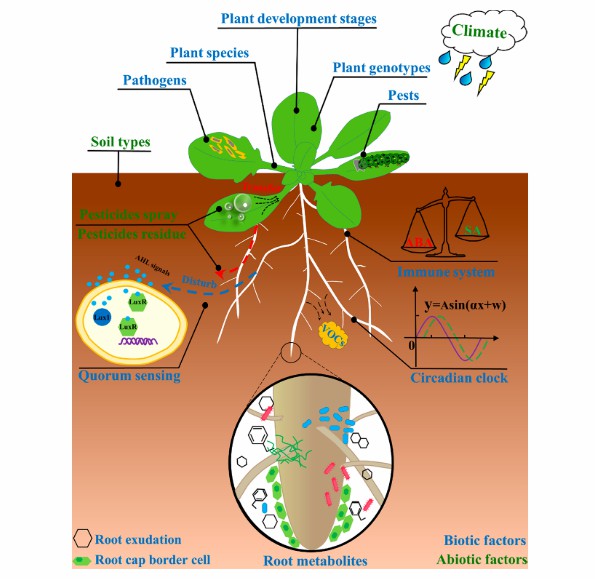Lifeasible focuses on the application of microorganisms in plant protection and provides rhizosphere microorganism research services to promote the use of rhizosphere microorganisms in plant protection.
The plant rhizosphere is the interface between the plant root and the soil. In this area, there are a large number of microorganisms that interact with the plant and are known as rhizosphere microorganisms. Rhizosphere microorganisms are of great importance in the biological control of plant diseases and pests. However, using chemical fertilizers affects the design of rhizosphere microorganisms by plants, resulting in a reduction in rhizosphere microorganism diversity. This makes plants more susceptible to pathogenic bacteria and less resistant. There is an urgent need for research and discovery of plant-specific adapted rhizosphere microorganisms to improve plant resistance to biotic and abiotic stresses.
 Fig. 1 Determinants of the microbial community assembly in the rhizosphere (Qu et al., 2020).
Fig. 1 Determinants of the microbial community assembly in the rhizosphere (Qu et al., 2020).
Lifeasible provides research services for rhizosphere microorganisms to help realize the plant protection value of rhizosphere microorganisms.
Rhizosphere microbiome studies
We offer rhizosphere microbiome studies to help discover rhizosphere microorganisms that benefit plants. We help analyze the variety and quantity of rhizosphere microorganisms of the same plants in different growth situations. We also help to study the changes in the composition and function of the rhizosphere microbiome during the infestation of soil pathogenic microorganisms. Both services are aimed at identifying rhizosphere microorganisms that benefit plant growth and improve plant resistance.
Study of interactions between rhizosphere microorganisms and plants
Studying the interactions between rhizosphere microorganisms and plants helps to understand the mutual promotion between rhizosphere microorganisms and plants specifically. We offer services to study the interactions between rhizosphere microorganisms and plants, including the effects of plant root secretions on rhizosphere microorganisms, the effects of rhizosphere microorganisms on plant root shape, and the effects of rhizosphere microorganisms on plant resistance. We also provide studies on the mechanisms of interactions between plants and rhizosphere microorganisms.
Designing the rhizosphere microbiomes
We offer rhizosphere microbiome design for different plants. We have an in-depth understanding of the interactions between a wide range of plants and their rhizosphere microorganisms. We can design rhizosphere microbiomes based on this to improve plant growth and stress resistance.
In studying the differences in plant rhizosphere microorganisms, we use DNA microarray technology, high-throughput sequencing technology, and phenotype microarray technology to detect microorganisms and analyze host-associated quantitative abundance profiling (HA-QAP). To investigate the interactions between rhizosphere microorganisms and plants, we used transcriptome analysis, metabolome analysis, and root secretion analysis to initially determine the interactions. We further investigate the interaction mechanisms by root box method, isotope labeling, gene editing, and artificial construction of rhizosphere microbiomes. In terms of detection equipment, we have LC-MS and MALDI-MS instruments for metabolite and root secretion analysis.
Lifeasible helps to study the differences in plant rhizosphere microorganisms, the interaction between plants and their rhizosphere microorganisms, and the mechanism of action. We also provide rhizosphere microbiome design services for improving plant growth and resistance. We have professional research methods and advanced equipment to realize efficient research of rhizosphere microorganisms. Please contact us for your rhizosphere microorganism research.
References